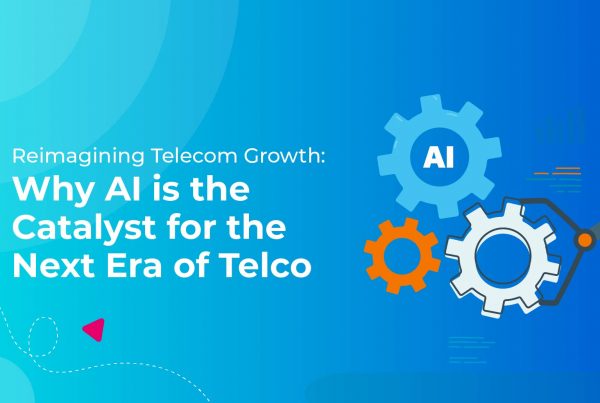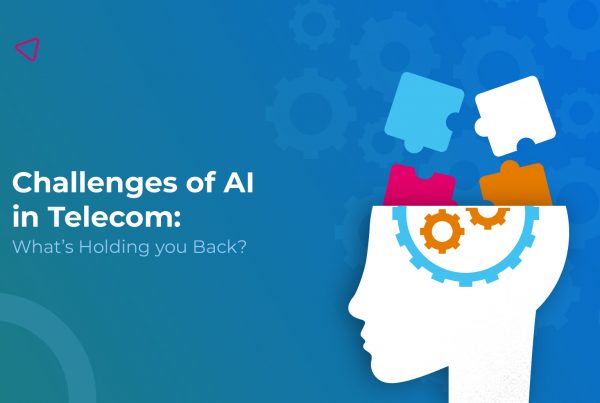User engagement and customer loyalty are the linchpins of success in telecom, and gamification has emerged as the groundbreaking strategy to excel at both recently.
What is gamification?
In a nutshell, gamification is described as “applying game-like accelerated user interface design to make electronic transactions both enjoyable and fast”. In the context of telecoms, it would be the use of game-like elements in non-game environments such as telecom sales and distribution channels to engage users.
The Telecom Revenue-Growth Newsletter
Our coveted monthly newsletter compiles vetted insights on creating effective sales and distribution chains that fulfil telcos' revenue goals. That, and a lot more.
Here’s a list of what will be covered in this blog:
How is it adding value for telcos?
Beyond the mechanics of gamification lies a fundamental shift in how MNOs approach user engagement and loyalty. It’s about creating meaningful, engaging, and personalized experiences that resonate on a human level. Gamification is evolving to deliver tailored experiences, leveraging data analytics and artificial intelligence to offer personalized challenges and rewards. This level of personalization establishes a profound connection with users, enhancing engagement and loyalty.
This transformative approach has the potential to revolutionize the telecom sales and distribution landscape. By providing an engaging platform to motivate and incentivize users, it directly tackles the challenges encountered by telecom operators and channels. As technology advances, gamification strategies evolve, capitalizing on trends like rewards, personalization, customer feedback, real-time updates, as well as the integration of virtual and augmented reality, and multi-channel accessibility. And so, by infusing game-like elements into their S&D channels, telcos are reshaping their interactions with users, surging engagement, and cultivating customer loyalty.

Why gamification needs to be a part of core strategy?
One of the significant hurdles faced by telecom operators and channels is the monotony of incentives, as the traditional approach of offering incentives in loyalty programs has become predictable. Over time, these rewards can become expected, leading to a wane in interest and effectiveness. This is where gamification can be strategised by telcos to inject new life into these programs by introducing innovative rewards and incentives.
This not only revitalizes customer engagement but also fosters a sense of excitement and anticipation. Moreover, the persistent communication gap, often experienced in the last mile of operations, is bridged by the real-time updates facilitated by gamification. By offering immediate program updates, this approach ensures that critical information, including updates, promotions, and incentives, reaches sales and distribution channels in a timely manner. This newfound transparency not only enhances communication but also cultivates a stronger sense of collaboration.
The ever-persistent challenge of personalisation at scale, where operators struggle with engaging their users and agents as they grow at scale, is met head-on by gamification’s sophisticated segmentation and personalization capabilities. Leveraging data analytics and artificial intelligence, gamification tailors challenges and rewards to individual needs and behaviors. This level of personalization establishes a deeper connection with users, significantly enhancing user engagement and loyalty.
How does it contribute to the bottom-line?
It addresses the perennial issue of uncertainty and lack of future plans. By introducing competitive leaderboards and interactive challenges, operators can motivate sales reps and distributors, instilling a sense of purpose and direction. This not only improves performance but also aligns efforts with the company’s overarching goals, reducing uncertainty and driving productivity.
The absence of a direct mechanism for gathering customer feedback is a common challenge faced by telecom companies, one that’s strategically tackled by gamification. Through interactive surveys, quizzes, and challenges, telecom companies can gather valuable insights directly from customers. This dynamic feedback loop empowers operators to make informed decisions, resulting in continuous improvement and enhanced offerings and services.
Most importantly, gamification’s seamless integration across various channels, including mobile apps, websites, and social media, ensures wider accessibility and engagement. This not only expands the reach of engagement efforts but also establishes a unified experience for users across different platforms.

What does the future look like with gamification?
As gamification continues to evolve, it is on the cusp of integrating virtual and augmented reality into its experiences. This technological advancement promises to revolutionize training and skill enhancement for sales reps and distributors. The immersive environments created by virtual and augmented reality offer a dynamic platform for practice and growth. With its integration of cutting-edge technologies and multi-channel accessibility, it paves the way for a future where telecom engagement is not just a strategy, but a dynamic, shared experience that resonates deeply with users.
Final Thoughts
In conclusion, gamification is more than just a strategy; it’s a manifestation of a profound shift towards customer-centric engagement and loyalty. By incorporating gamification at the core of the S&D strategy, MNOs can not just be providers of services; they can be partners in the customer journey. They can harness the power of gamification with the ultimate goal of creating meaningful, engaging, and personalized experiences that resonate with the users.


